When you think of Native Americans, you may have a singular image in mind. Their cultures have faced systematic erasure over the last 500 years, leading to the loss of rich heritage.
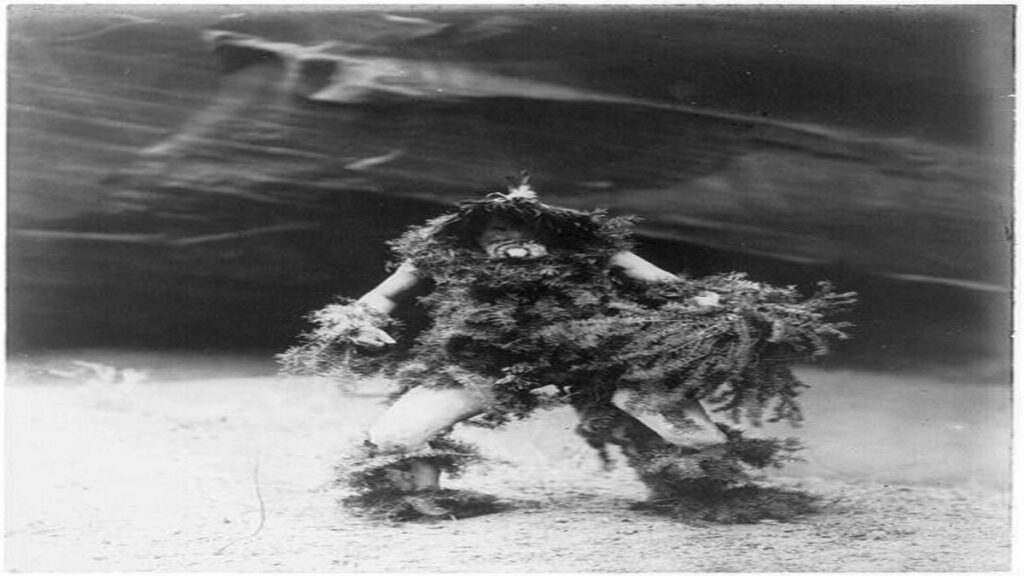
Without Edward Curtis, a photographer born in 1868, these remnants of a majestic civilization would have been lost forever. These masks, while visually stunning, also hold significant spiritual and cultural importance.
Hamatsa Throw and Mask
In this photograph, a woman is adorned in a Chilkat blanket, decorated with vibrant artwork depicting faces—eyes, mouths, smiles. She also wears a Hamatsa neck ring. The Hamatsa were a mysterious group with a complex history too extensive to explore fully here.
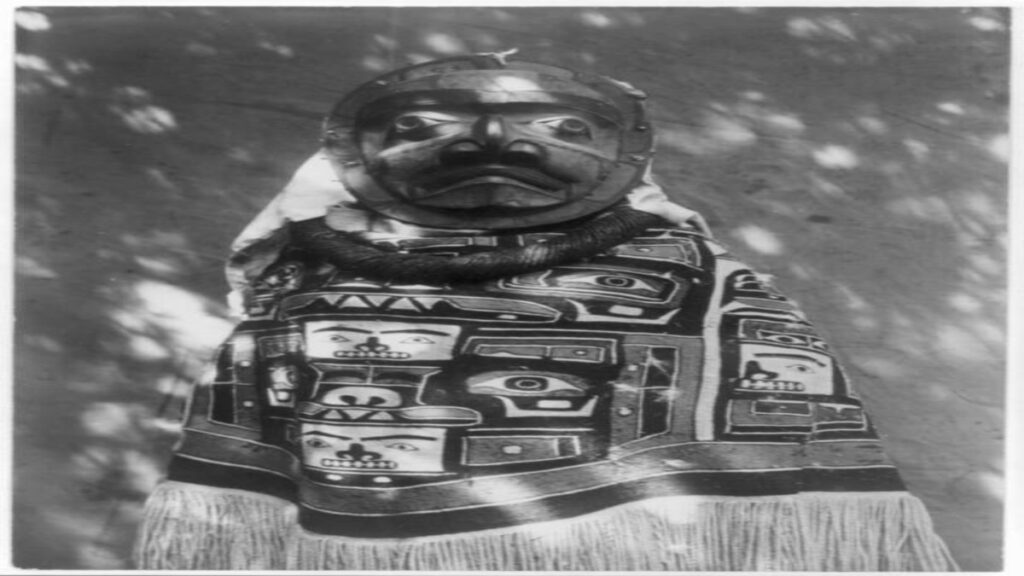
The mask she wears represents a deceased family member, underscoring the significance of masks in Native American storytelling and spirituality. The boldness of the mask, along with the vibrant artwork on the blanket, evoke a surreal quality that defies description.
The Headwear of a Navajo Man
This portrait is otherworldly. Behind the striking Navajo dress stands a man, his hair adorned with feathers resembling roots. Around his neck, he wears a wreath of spruce branches. His pale face resembles that of an owl or bird of prey.
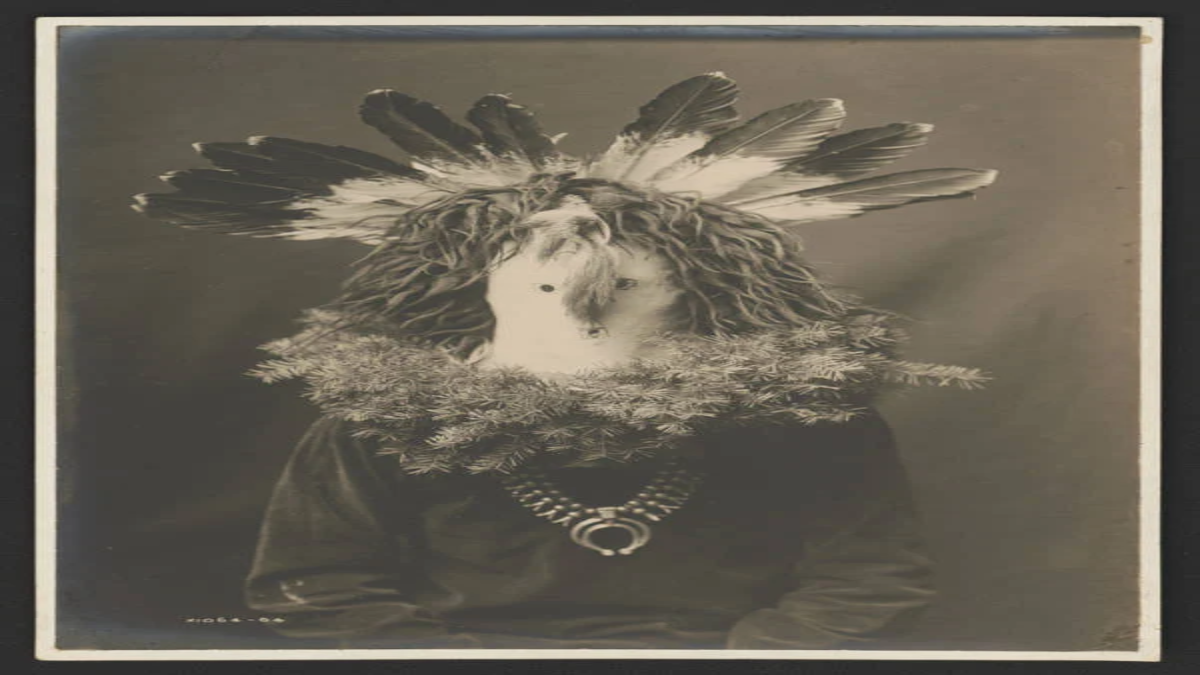
He sits in a monk-like posture as the photographer operates his device. Throughout his career, Curtis understood that his photographs would likely become the only remnants of many indigenous people.
ALSO READ: Kansas School District Scraps Hair Policy as Native American Student Forcefully Cuts His Hair
Tsunukwalahl
This is the mask of Tsunukwalahl, captured in the year 1914. Limited information exists about this figure, except that he was a mythical being and that his likeness was utilized during the Winter Dance.
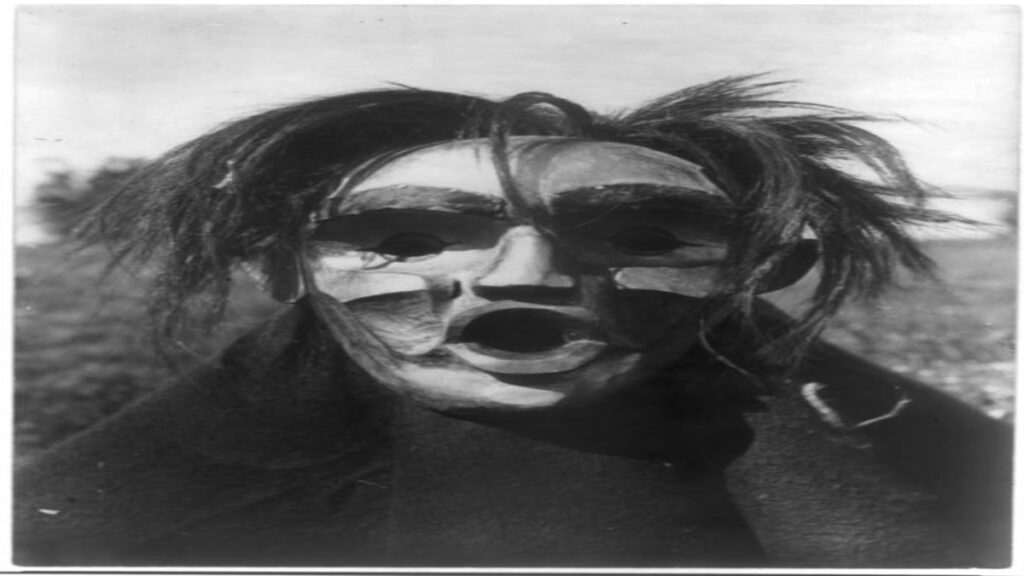
His visage appears to be caught in a mighty bellow or perhaps a moment of surprise. It could be the expression of the spirit, a phenomenon beyond our understanding. This mask possesses striking features that are simultaneously bold and gentle.
Dangerous Hami
This full-body fur dress represents Hami, known to the Koskimo people as “dangerous thing.” With its large gloves and head, it’s easy to understand why. Curtis captured this photograph during the Numhlim ceremonies in 1914.
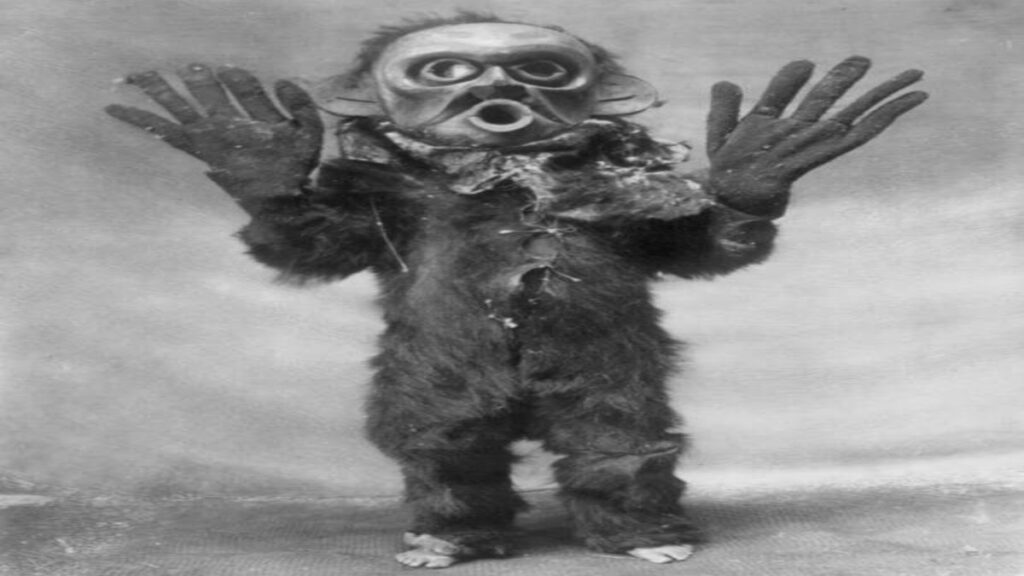
The enormous hands appear capable of violence or calamity, truly embodying the phrase “heavy-handed.” Meanwhile, the mask, with its deep ridges and exaggerated features, effectively transforms its wearer into a vibrant and captivating character.
An Avatar of Disorder
Many of these photographs were captured during the Winter Dance ceremony. Curtis was fortunate enough to witness a plethora of these captivating and haunting masks in action, all gathered in one place.
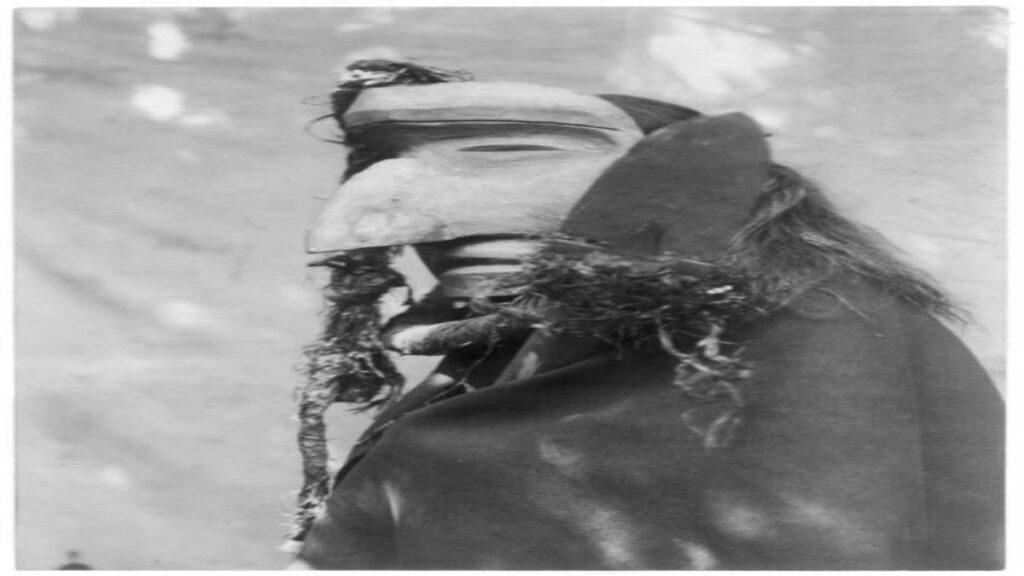
This image portrays a Nuhlimahla ceremonial mask wearer. Such characters were employed to embody foolishness and idiocy, craving disorder, grime, and madness.
POLL—Should the Government Increase Taxes on the Wealthy To Reduce Economic Inequality?
The Sisiutl
One of the central figures in the Winter Dance, this figure adorned with hemlock wears a mask featuring two diverging sea serpents. The Sisiutl is regarded as a mediator between physical and supernatural realms, a role often associated with shamans.
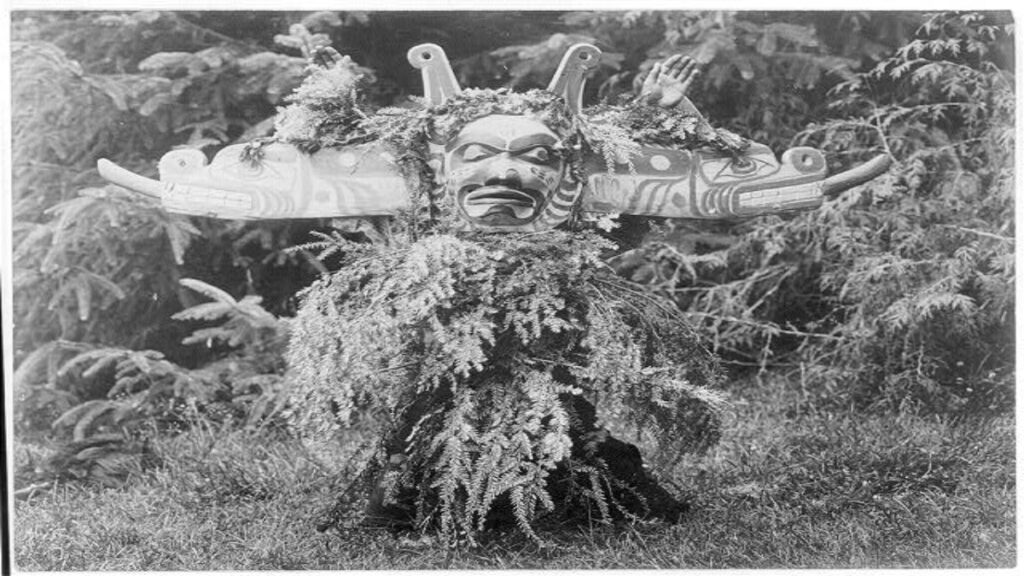
The interpretations of this character vary as much as the cultures that depict it. Some cultures portray it with three heads, while others show it with two. Typically, the heads are adorned with horns.
The Hunter
This frightening face has an intriguing tale. It is utilized during the four-day ceremonial Winter Dance to represent the hunter who defeats a massive man-eating octopus! Its rugged appearance and bared teeth convey a fierce determination.
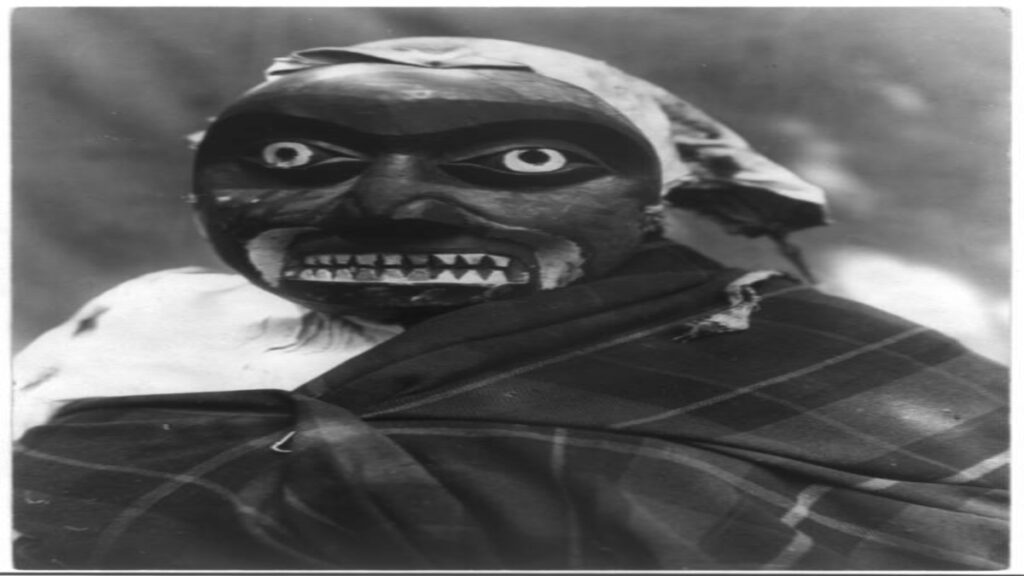
These masks were not worn to conceal the wearer’s identity. Instead, they were employed to celebrate tradition, culture, and the inner aspects of the wearer, which remained hidden deep within the individual.
Nunivak Mask
This is a photograph of a man wearing a Nunivak mask, taken by Curtis as late as 1929. A sense of tranquility radiates from this face, sculpted with gentle, smooth angles.
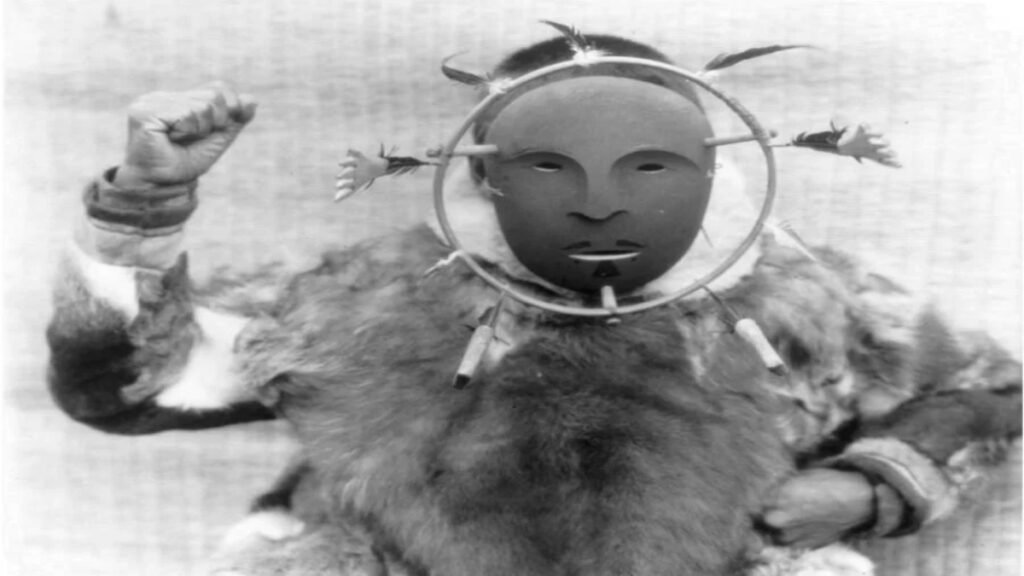
It’s a tragic reality that the treasures cherished by these peoples were targeted for destruction over the past few centuries. The US and Canadian governments aimed to eradicate the identity of the remaining few after tens of millions had perished since the arrival of European settlers.
ALSO READ: Connecticut School Faces Criticism for Scrapping Veterans Day, Columbus Day From Holiday Calendar
Kachinas: Spirits from Ancient Pueblo
This image, captured in 1925, depicts the revered Kachinas of Native American cultures. Kachinas are believed to embody more than just spiritual entities. It is within Pueblo traditions where kachina rites truly come to life.
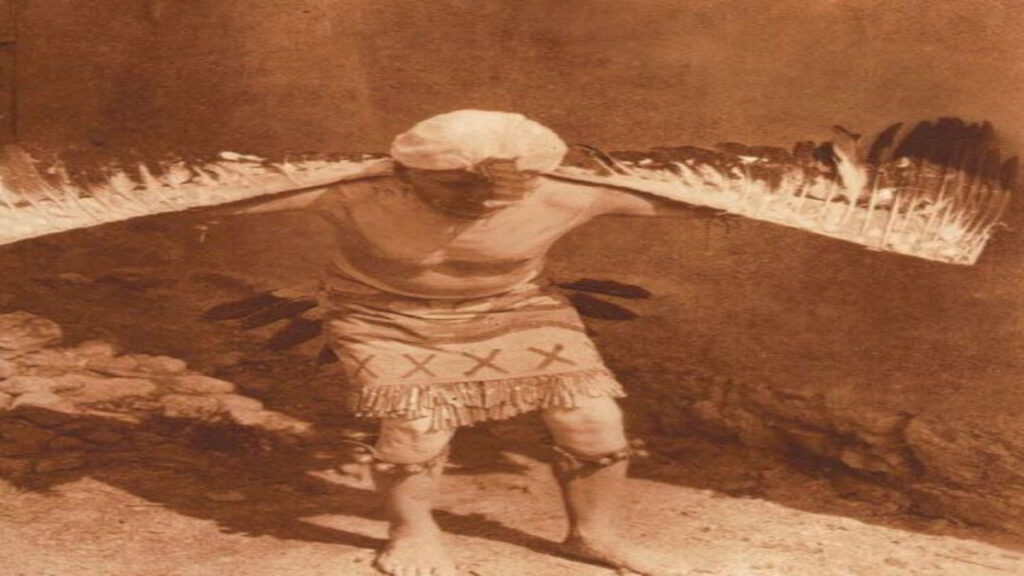
It is a sacred practice among the Hopi, Zuni, and various Pueblo communities in New Mexico. Typically, men from the Pueblo tribe perform symbolic dances while adorned in Kachina regalia to honor the Kachina spirits
The Mystical Zahadozha
The mystical Zahadozha is another facet of Navajo folklore captured by Curtis. Referred to as “fringe mouth,” Zahadozha is a water spirit known for the distinctive markings on its mouth.

According to Navajo tradition, this water spirit serves as a protector, and those saved by it express gratitude. The Navajo mask features a design of black and white, reflecting the spirit’s significance.
Hasche Zhini-Navajo
This portrait, taken in 1905, is part of Edward S. Curtis’s collection. It portrays a Native American man embodying the Black God, known as Haschezhini.

The Black God is distinguished by markings depicting the crescent moon, a full moon, and the Pleiades on his temple. He is believed to embody supernatural forces that shape the universe, particularly through the use of fire.
You Might Also Like:
Supreme Court to Decide on Trump’s Election Theft Trial Ahead of 2024 General Elections
Biden Slams Republicans, Says they’re Afraid of Trump’s Border Threat
FCC Links AI-Generated Biden Robocall to Texas Companies
These Are Ways to Use Tennis Balls Around the House Beyond Just Playing Tennis
Trump’s Fraud Trial Judge Fumes After Discovering a Key Witness in His Trial May Admit to Perjury
